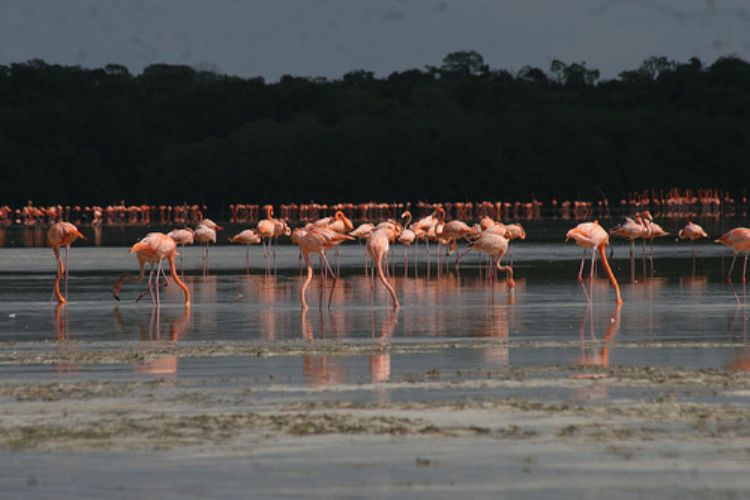Celestún, natural paradise in Mexico

Celestun has been considered a Biosphere Reserve since 1989. It can be reached from Merida or Campeche in a 90 to 210 kilometer trip, respectively. It is a reserve of 59,500 hectares, between Yucatan and Campeche.
This site is important for the presence of various elements; one of the most important populations of Pink Flamingos or American Flamingos, sharing their space with Sheartail hummingbirds, California Least Tern, sea sparrows, Yucatan quails, woodpeckers, cardinals, Kingfishers, storks, vultures, pelicans and owls, among many others. It is a paradise for birds, some endemic and others only during their migration cycles.
These reproduce and develop in mangrove swamps, another characteristic of the region, the shallow and saline water allows the life of microorganisms the birds feed on, which explains their great variety. The salinity is a necessary condition for the reproduction of brine shrimp, the preferred food of flamingos and fish.
It is also a place of marshes, formed by the nature of marine currents allowing sand accumulation. Among the vegetation thriving in its agreeable temperature and humidity, in addition to the mangroves are coastal dunes, grasslands and marine meadows.
Climate is apt for the proliferation of frangipani, kuka, palm trees, everglades palm trees, sisal hemp, seagrape borers and others found in less humid areas as the cactus.
Among the animals enjoying this habitat are reptiles like the boa, nauyaca snakes, crocodiles, amphibians and fish as in catfish, Mayan cichlid, sea bass, snails and crabs. It is ideal for observing nature.
Articulo Producido por el Equipo Editorial Explorando México.
Copyright Explorando México, Todos los Derechos Reservados.
Foto: SubbuThePeaceful






